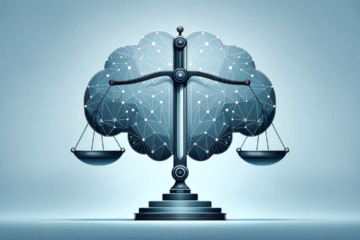
This article is written by Kalpana Bisen of 4th Semester of BA LLB (Hons.) of Alliance University, an intern under Legal Vidhiya
ABSTRACT
An essential component of India’s federal structure is the administrative relationship between the Union and the States. The Indian Constitution defines these linkages, especially in Articles 256 through 263. A dual polity is permitted by the framework, which attempts to create a balance of power between the federal and state administrations. The union government’s nomination of governors to the states is a crucial component of this arrangement. Representing the President, the governor serves as the state’s constitutional head of state. The coordination between the Union and the States is guaranteed by this appointment process.
Moreover, All India Services, which oversees the administration of both the Union and the States, plays a part in administrative relations. Examples of these services are the Indian Police Service (IPS) and the Indian Administrative Service (IAS). One distinctive aspect of the Indian federal system is the dual duty played by the All India Service.
To promote efficient coordination and collaboration between the union and the states, several administrative institutions have also been formed, including interstate councils, finance commissioners, and planning commissions. These procedures are essential for resolving financial, economic, and social development concerns and for maintaining good relations between the Union and the States. To maintain the efficient operation of the federal structure and national governance, the administrative ties between the Union and the States in India are a complex and well-defined system that is backed by several administrative processes and codified in the Constitution.
KEYWORDS
Administrative relations, Union, States, India, Federal System, Constitution, Governors, All India Services, Indian Administrative Service, Indian Police Service, Inter-State Councils, Finance Commissions, Planning Commissions, Coordination, Cooperation, Dual Polity.
INTRODUCTION
India’s federal structure, which is based on the Constitution, is fundamentally shaped by the administrative relationships between the Union and the States. These relationships outline the duties and authority shared by the federal government and the states to create a stable and efficient system of government. The underlying concepts for these administrative connections are provided by Articles 256 to 263 of the Indian Constitution. These provisions cover a variety of aspects, including the legislative, financial, and executive domains.[1]
The Constitution gives the Union the authority to instruct the States on how to carry out laws and guarantees that the States will use their executive authority by the laws passed by Parliament. Additionally, it permits the States to receive executive authority from the Union, giving them the ability to manage and carry out particular laws and policies within their borders.
Another important factor is financial relations, which are outlined in the Constitution along with the procedures for dividing up financial resources between the Union and the States. This covers the clauses about the formation of Finance Commissions to suggest the distribution of central taxes and other financial issues.
Other elements that influence the administrative ties between the Union and the States are the distribution of executive powers, the Centre’s authority over State laws, and the creation of interstate councils. By making intergovernmental collaboration, coordination, and dispute resolution easier, these rules hope to fortify the nation’s federal system.
ADMINISTRATIVE RELATIONS BETWEEN THE CENTRE AND THE STATES
The administrative relations between the Centre and the States in India are governed by Articles 256 to 263 of the Indian Constitution. These relations involve the direction to the State Governments by the Union Government and the delegation of powers by the Union to the States. The Constitution provides for the mutual delegation of functions between the Centre and the states. The states can delegate certain functions to the Centre, and the Centre can delegate certain functions to the states.
The Centre’s executive authority encompasses the whole country, while a state’s executive power extends to areas where the state legislature has ultimate legislative power. These provisions ensure a balance of power and cooperation between the Centre and the States in the Indian federal system.[2]
- Direction to the State Governments by the Union Government-
The Union Government can give directions to the State Governments for the execution of laws. However, these directions must be general and should not be discriminatory in nature.
The Constitution provides for the mutual delegation of functions between the Centre and the states. The states can delegate certain functions to the Centre, and the Centre can delegate certain functions to the state.
The administrative relations between the Centre and the States are established by the Constitution, which provides for a federal structure with a clear division of powers between the Centre and the States. The Centre’s executive authority encompasses the whole country, while a state’s executive power extends to areas where the state legislature has ultimate legislative power. These provisions ensure a balance of power and cooperation between the Centre and the States in the Indian federal system.
b. Delegation of Powers by the Union to the States-
The administrative relations between the Centre and the States in India are governed by Articles 256 to 263 of the Indian Constitution. These provisions ensure a balance of power and cooperation between the Centre and the States in the Indian federal system.
The Union Government can give directions to the State Governments for the execution of laws. However, these directions must be general and should not be discriminatory in nature.[3]
The Constitution provides for the mutual delegation of functions between the Centre and the states. The states can delegate certain functions to the Centre, and the Centre can delegate certain functions to the states. The Centre’s executive authority encompasses the whole country, while a state’s executive power extends to areas where the state legislature has ultimate legislative power.
ALLOCATION OF EXECUTIVE POWERS
The allocation of executive powers in the United States is defined by the Constitution, which establishes the executive branch as one of the three separate but equal branches of government, alongside the legislative and judicial branches. The executive branch is responsible for enforcing the law, and it is vested with various powers, including express, implied, and inherent powers. The President uses these powers to approve and veto bills, make treaties, issue executive orders, and ensure that laws are faithfully executed. The Constitution also imposes obligations on the President, such as the duty to provide information on the state of the union, recommend measures to Congress, receive foreign ambassadors, and commission all officers of the United States[4]. The allocation of executive powers is designed to work in conjunction with the powers of the other branches, creating a system of checks and balances to prevent any one branch from becoming too powerful[5].
The legislative branch, or Congress, has the authority to pass legislation, declare war, ratify treaties, and have the power of the purse, among other powers. It also has the responsibility of overseeing the executive branch and can check the President’s powers through the impeachment process and the approval of appointments and treaties[6].
The judicial branch, headed by the Supreme Court, has the power to interpret the law and is responsible for ensuring that the laws and actions of the executive branch and the legislative branch are by the Constitution. The Supreme Court can also declare laws or executive actions unconstitutional.
CENTRE’S CONTROL OVER STATE LEGISLATION
The Indian Constitution divides all legislative, executive, and financial authority between the centre and the states. The Constitution empowers the centre to exercise control over the state’s legislative matters in exceptional situations, and the governor can reserve certain types of bills passed by the state legislature for the president’s consideration.[7] Bills on certain matters enumerated in the State List can be introduced in the state legislature, but the President can direct the states to reserve money bills and other financial bills passed by them. However, the Constitution assigns a position of superiority to the centre in the center-state relations[8].
In the United States, Article I of the Constitution describes the design of the legislative branch of the government, the Congress, and vests all legislative powers in Congress. The Constitution first vests all legislative powers in Congress of the United States, which consists of a Senate and a House of Representatives.[9] Congress has authority only over the subject matter specified in the Constitution, particularly in Article I, Section 8. The Constitution limits Congress’s power by conditioning legislation upon the agreement of two differently constituted Chambers.[10] All state governments in the US are modelled after the federal government and consist of three branches: executive, legislative, and judicial. The US Constitution mandates that all states uphold a “republican form” of government, although the three-branch structure is not required. All 50 states have legislatures made up of elected representatives, who consider matters brought forth by the governor or introduced by its members to create laws.
CONCERNS REGARDING ADMINISTRATIVE RELATIONS BETWEEN THE CENTRE AND THE STATE
Concerns regarding administrative relations between the Centre and the states in India primarily stem from the unequal and unbalanced distribution of powers between the two levels of government. The Indian Constitution follows a quasi-federal system, which means that it is neither purely federal nor purely unitary. This system aims to maintain a balance between the central government and the state governments, ensuring efficient administration and policy implementation across the nation.
Some concerns and issues in centre-state relations include:
1. Centre’s control over state legislation: The Constitution authorizes the central government to exert influence over state legislation in certain circumstances. For example, the President can direct the states to reserve money bills and other financial bills passed by them.
2. Centre’s executive authority: The executive authority of the Centre encompasses the whole country, while a state’s executive power extends to areas where the state legislature has ultimate legislative authority.
3. Inter-state disputes: The Constitution provides for the establishment of an Inter-State Council (Article 263) to examine and discuss matters of common concern. The President might establish an Inter-State Council to investigate and discuss matters of common interest.
4. Financial relations: The Constitution divides financial authority between the Centre and the states. The Union List designates subjects for major decisions by the central government, while the State List and Concurrent List designate subjects for decision-making roles by the central and state governments, respectively.
5. Political power tensions: The unequal distribution of powers between the Centre and the states can create political power tensions and national issues in centre-state relations.
6. Judicial system: The Constitution established a single judicial system, which means that the courts have no separation of powers. The Supreme Court of India has the power to interpret the Constitution and to resolve disputes between the Centre and the states.
7. Center’s ability to issue directions: The Centre can issue directions to a state under Article 256 as a legal entity, not as a geographical or territorial unit.
These concerns and issues highlight the importance of maintaining a balance between the Centre and the states in India’s federal system. The Sarkaria Commission on Centre-State Administrative Relations was established to make critical and objective analyses of these important issues in light of the recommendations made by the commission. The commission’s report aimed to provide a framework for improving centre-state relations and ensuring a more harmonious and cooperative federal system in India.
PREVIOUS CASE LAWS
S. R. Bommai v. Union of India (1994)
This case established the principle that the Centre cannot interfere in the internal administration of the states unless there is a clear violation of the Constitution or a national emergency.
Kesavananda Bharati v. State of Kerala (1973)
This case established the doctrine of basic structure, which prevents the Parliament from amending the Constitution in a manner that would destroy its basic structure or principles.
State of West Bengal v. Union of India (1977)
This case established the principle that the Centre cannot impose financial conditions on the states without considering their financial capacity and overall fiscal federalism.
Rajasthan Electricity Regulatory Commission v. Union of India (2017)
This case established the principle that the Centre cannot interfere in the functioning of the state regulatory commissions without following the proper procedure.
Cooperative Federalism
This concept is not a specific case but a principle that emphasizes the cooperative relationship between the Centre and the states. The Centre and the states are expected to work together to achieve common goals and to ensure the smooth functioning of the federal system.
CONCLUSION
The administrative relations between the Union and the States in India are governed by the Constitution, which provides a framework for these relations. The Constitution divides powers between the Union and the States into three lists: the Union List, the State List, and the Concurrent List. The Union government appoints governors to the states, who have certain powers to control the state governments. Various administrative mechanisms are in place to ensure effective coordination and cooperation between the Union and the States. The All-India Services (IAS, IPS, and IFoS) play a crucial role in these administrative relations. The administrative relation between the Union and the States forms the bedrock of Indian federalism, and its specific details are worked out through legislation and the political process[11].
The separation of powers is a fundamental principle in the governance of states, including India and the United States. It involves the division of a state’s government into branches, each with separate and independent powers and responsibilities. In India, the legislative, executive, and judicial powers are distributed between the Union and the States to maintain a balance of power and prevent the concentration of power.
In the United States, the executive branch, headed by the President, is responsible for implementing and enforcing laws, conducting diplomacy, and commanding the armed forces. The President has the power to issue executive orders, grant pardons, and recommend measures to Congress. The executive branch is also responsible for appointing the heads of federal agencies and preparing the federal budgets.
In both India and the United States, the executive branch at the state level is headed by a governor who is directly elected by the people. The governor is responsible for implementing state laws and overseeing the executive branch, which may include other elected officials such as the lieutenant governor, attorney general, and secretary of state.
REFERENCES
- Administrative relations (2021) INSIGHTSIAS. Available at: https://www.insightsonindia.com/polity/functions-and-responsibilities-of-the-union-and-the-states-issues-and-challenges-pertaining-to-the-federal-structure-devolution-of-powers-and-finances-up-to-local-levels-and-challenges-therein/issues-and-challenges-pertaining-to-the-federal-structure/centre-state-relations/administrative-relations/ (Accessed: 06 February 2024).
- Administrative relation between union and state UPSC – Mechanisms Testbook. Available at: https://testbook.com/ias-preparation/administrative-relation-between-union-and-state (Accessed: 06 February 2024).
- Rai, D. (2020) The administrative relationship among union, states, and Local Bodies, iPleaders. Available at: https://blog.ipleaders.in/the-administrative-relationship-among-union-states-and-local-bodies/ (Accessed: 06 February 2024).
- Team, C. (2023) Centre-state relations, ClearIAS. Available at: https://www.clearias.com/centre-state-relations/ (Accessed: 06 February 2024).
- Administrative Relation Under Center State Relations: An insightful overview Tutorials point. Available at: https://www.tutorialspoint.com/administrative-relation-under-center-state-relations-an-insightful-overview (Accessed: 06 February 2024).
- State and local government (2022) The White House. Available at: https://www.whitehouse.gov/about-the-white-house/our-government/state-local-government/ (Accessed: 06 February 2024).
- The relationship between the States and the Federal Government Khan Academy. Available at: https://www.khanacademy.org/humanities/us-government-and-civics/us-gov-foundations/us-gov-relationship-between-the-states-and-the-federal-government/a/relationship-between-the-states-and-the-federal-government-lesson-overview (Accessed: 06 February 2024).
- State & Local Government National Archives and Records Administration. Available at: https://obamawhitehouse.archives.gov/1600/state-and-local-government (Accessed: 06 February 2024).
- Ltd, A.A. (2023) The Mutual Delegation of Administrative Power, Law Teacher. Available at: https://www.lawteacher.net/free-law-essays/administrative-law/mutual-delegation-of-administrative-power.ph (Accessed: 06 February 2024).
- Separation of powers in action – U.S. v. Alvarez United States Courts. Available at: https://www.uscourts.gov/educational-resources/educational-activities/separation-powers-action-us-v-alvarez (Accessed: 06 February 2024).
[1] Administrative relations (2021) INSIGHTSIAS. Available at: https://www.insightsonindia.com/polity/functions-and-responsibilities-of-the-union-and-the-states-issues-and-challenges-pertaining-to-the-federal-structure-devolution-of-powers-and-finances-up-to-local-levels-and-challenges-therein/issues-and-challenges-pertaining-to-the-federal-structure/centre-state-relations/administrative-relations/ (Accessed: 06 February 2024).
[2] Rai, D. (2020) The administrative relationship among union, states, and Local Bodies, iPleaders. Available at: https://blog.ipleaders.in/the-administrative-relationship-among-union-states-and-local-bodies (Accessed: 06 February 2024).
[3] Administrative Relation Under Centre-State Relations: An Insightful Overview Tutorials point. Available at: https://www.tutorialspoint.com/administrative-relation-under-center-state-relations-an-insightful-overview (Accessed: 06 February 2024).
[4] Article II, Section 3 National Constitution Centre – constitutioncenter.org. Available at: https://constitutioncenter.org/the-constitution/articles/article-ii/clauses/348 (Accessed: 06 February 2024).
[5] Resource Legislative Oversight of Emergency executive powers National Conference of State Legislatures. Available at: https://www.ncsl.org/about-state-legislatures/legislative-oversight-of-emergency-executive-powers (Accessed: 06 February 2024).
[6] Resource Legislative Oversight of Emergency executive powers National Conference of State Legislatures. Available at: https://www.ncsl.org/about-state-legislatures/legislative-oversight-of-emergency-executive-powers (Accessed: 06 February 2024).
[7] Part XI of the constitution of India (2023) Wikipedia. Available at: https://en.wikipedia.org/wiki/Part_XI_of_the_Constitution_of_India (Accessed: 06 February 2024).
[8] Administrative relation between union and state UPSC – Mechanisms Testbook. Available at: https://testbook.com/ias-preparation/administrative-relation-between-union-and-state (Accessed: 06 February 2024).
[9] Article II, Section 3 National Constitution Centre – constitutioncenter.org. Available at: https://constitutioncenter.org/the-constitution/articles/article-ii/clauses/348 (Accessed: 06 February 2024).
[10] Article I US Law. Available at: https://www.law.cornell.edu/constitution/articlei (Accessed: 6 February 2024).
[11] Administrative relation between union and state UPSC – Mechanisms Testbook. Available at: https://testbook.com/ias-preparation/administrative-relation-between-union-and-state (Accessed: 06 February 2024).
Disclaimer: The materials provided herein are intended solely for informational purposes. Accessing or using the site or the materials does not establish an attorney-client relationship. The information presented on this site is not to be construed as legal or professional advice, and it should not be relied upon for such purposes or used as a substitute for advice from a licensed attorney in your state. Additionally, the viewpoint presented by the author is of a personal nature.




0 Comments